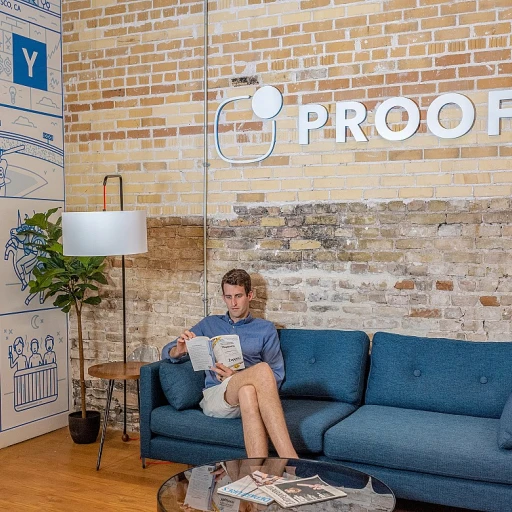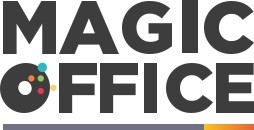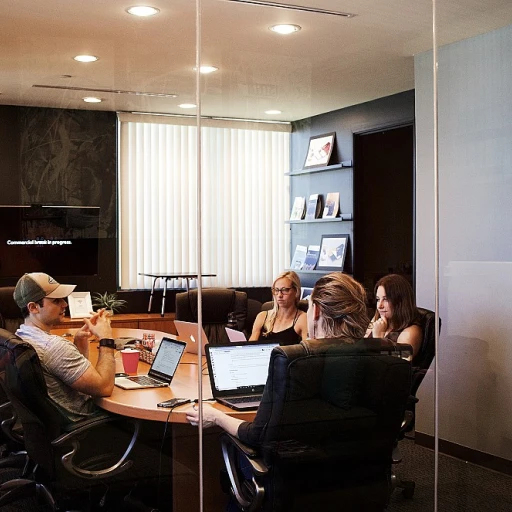
Understanding the Importance of Leadership Goals
Why Leadership Goals Matter in Performance Reviews
Understanding the role and importance of leadership goals in performance reviews is crucial for any office manager aiming to foster a productive and thriving work environment. Leadership goals serve as the roadmap that guides both leaders and team members towards achieving their potential, improving skills, and aligning with the company's broader objectives. Setting clear and specific goals not only helps in enhancing your team’s performance but also in your personal leadership development. For instance, incorporating SMART goals—Specific, Measurable, Achievable, Relevant, and Time-bound—can significantly improve the way goals are structured and assessed, ensuring that they are not only ambitious but also realistic and trackable over time. This structured approach leads to better time management and decision-making. Leadership goals also play a pivotal role in providing constructive feedback. When team members are aware of what is expected of them in terms of performance and development goals, it becomes easier to track progress and provide meaningful feedback. This feedback loop is essential for ongoing improvement and adaptation, allowing both leaders and employees to continuously refine their approaches and strategies. Furthermore, by linking leadership goals directly to the organisation's mission and objectives, you align individual aspirations with the larger vision, creating a cohesive and motivated team. This alignment is essential for the fulfilment of both personal and professional goals—effectively driving the team forward. Performance reviews, when conducted with well-defined leadership goals, become more than just an evaluative process; they transform into an opportunity for growth and development, laying the groundwork for enhanced productivity. This is particularly vital in dynamically changing work environments, where adaptability and emotional intelligence are key to maintaining a competitive edge. For office managers seeking to maximize their leadership potential and team efficiency, embracing a horizontal planning approach can also aid in optimizing workflows and ensuring that leadership goals are met. This methodology facilitates a more agile and collaborative work environment, as discussed in Enhancing Office Productivity with a Horizontal Planning Approach.Aligning Leadership Goals with Company Objectives
Integrating Leadership Goals with Business Needs
To maximise the effectiveness of leadership goals, it's crucial to align them with the company's overall objectives. This ensures that the efforts of office managers and their teams contribute directly to the overarching success of the organisation. Consider these points when aligning leadership goals with company needs:- Understand Company Vision and Mission: By clearly understanding the company's vision and mission, you can tailor leadership goals to support these long-term ambitions.
- Set SMART Goals: Implementing Specific, Measurable, Achievable, Relevant, and Time-bound (SMART) goals can bridge the gap between personal development and company objectives.
- Incorporate Employee Feedback: Regularly gather feedback from team members. Their insights can highlight areas where leadership goals can be adjusted to better serve company needs.
Examples of Leadership Goals for Office Managers
Illustrative Leadership Goals for Office Managers
Setting effective leadership goals for office managers is crucial for driving both individual and team success. These goals, when developed with care, can lead to significant improvements in a variety of areas such as employee engagement, operational efficiency, and overall management skills. Incorporating SMART leadership principles can further refine goal setting, ensuring objectives are Specific, Measurable, Achievable, Relevant, and Time-bound. Below are some exemplary goals tailored for office managers:
- Enhancing Time Management Skills: Focus on improving time allocation for daily tasks, which can streamline operations and ensure better handling of responsibilities. This goal may include strategies like prioritizing tasks or utilizing tools for better scheduling.
- Developing Emotional Intelligence: Work on understanding and managing personal emotions along with recognizing team members’ emotions to boost morale and foster a positive work environment.
- Strengthening Feedback Mechanisms: Aim to set up regular channels and opportunities for feedback, both giving and receiving, to create a transparent work culture. Constructive feedback can lead to team members working more effectively towards common objectives.
- Improving Leadership Decision-Making: Implement strategies that support better decision-making processes, incorporating data analysis and team insights to guide decisions.
- Fostering Leadership Development: Engage in continuous professional development to refine leadership qualities, which will help in leading the employees more effectively, ultimately resulting in a productive performance review.
Office managers should tailor these goals to align them more closely with specific company objectives. This approach not only fortifies their own leadership development but also fortifies the organization’s work environment and culture, making each goal serve as a stepping stone towards larger organizational achievements.
Measuring the Success of Leadership Goals
Evaluating the Effectiveness of Leadership Objectives
When it comes to leadership development, setting specific goals allows office managers to track progress over time. Performance reviews offer a valuable opportunity to measure the success of these leadership goals. Evaluating leadership objectives requires a clear understanding of various indicators and the impact they have on the team.Challenges in Achieving Leadership Excellence
Challenges will arise in leadership goal achievement. Adapting strategies in the face of difficulties is essential for continuous leadership development. An office manager's resilience often influences their team's productivity and cohesion over time. Successfully measuring leadership goals not only benefits leaders themselves but also contributes to the overall performance of the workplace. By focusing on improvement and adaptation, office managers can ensure their leadership remains aligned with the ever-evolving company objectives.Overcoming Challenges in Setting Leadership Goals
Navigating Obstacles in Leadership Goal Achievement
It's not uncommon for office managers to face challenges when setting and achieving leadership goals. Understanding these obstacles can help in finding effective solutions and ensuring continued growth and development. Here are some typical challenges and how to address them:- Lack of Clarity in Goals: One of the primary challenges is not having specific and clearly defined goals. To overcome this, it is important to set SMART goals – Specific, Measurable, Achievable, Relevant, and Time-bound. This approach provides a clear direction and measurable benchmarks for success.
- Balancing Multiple Responsibilities: Office managers often juggle a wide range of responsibilities, which can impede focus on leadership development. Effective time management and prioritization are essential. Allocating dedicated time slots for leadership goal pursuits can enhance focus and output quality.
- Limited Resources and Support: Sometimes, limited resources can be a hindrance. Leaders should advocate for necessary resources and establish open communication with upper management to gather support. Forming a supportive network with fellow team members can also aid in navigating resource constraints.
- Resistance to Change: Employees might resist implementing new strategies or changes proposed by leadership goals. Here, emotional intelligence plays a crucial role in understanding team dynamics and fostering an environment open to change. Encourage feedback and involve employees in goal setting to increase buy-in.
- Lack of Constructive Feedback: Without regular performance reviews and constructive feedback, it can be tough to gauge progress. Regular check-ins and open dialogue with employees can provide valuable insights and help in refining goals to better align with performance objectives.
Continuous Improvement and Adaptation
Embracing Continuous Improvement in Leadership
Continuous improvement is a cornerstone of effective leadership. It involves a commitment to ongoing development and adaptation, which is crucial for maintaining relevance and effectiveness in a dynamic work environment. By setting specific and time-bound goals, leaders can foster an environment that encourages growth and innovation.
Adapting to Change
Change is inevitable in any organization. Leaders must be prepared to adapt their leadership goals to align with new company objectives and market conditions. This might involve revisiting SMART goals regularly to ensure they remain relevant and achievable. Flexibility in goal setting can help leaders and their teams navigate through transitions smoothly.
Feedback and Development
Constructive feedback is essential for leadership development. Regular performance reviews provide opportunities for leaders to receive input from employees and peers, which can be invaluable for personal and professional growth. Incorporating feedback into leadership development plans can enhance emotional intelligence and decision-making skills, leading to better outcomes for the entire team.
Encouraging a Culture of Learning
Leaders should encourage a culture where team members feel empowered to pursue their own development goals. This can be achieved by setting up mentorship programs, providing access to training resources, and recognizing achievements. A supportive environment not only improves individual performance but also contributes to the overall success of the organization.
Regularly Reviewing and Adjusting Goals
Leadership goals should not be static. Regular reviews, perhaps every three months, allow leaders to assess progress and make necessary adjustments. This iterative process ensures that goals remain aligned with both personal aspirations and organizational needs, fostering a proactive approach to leadership development.













